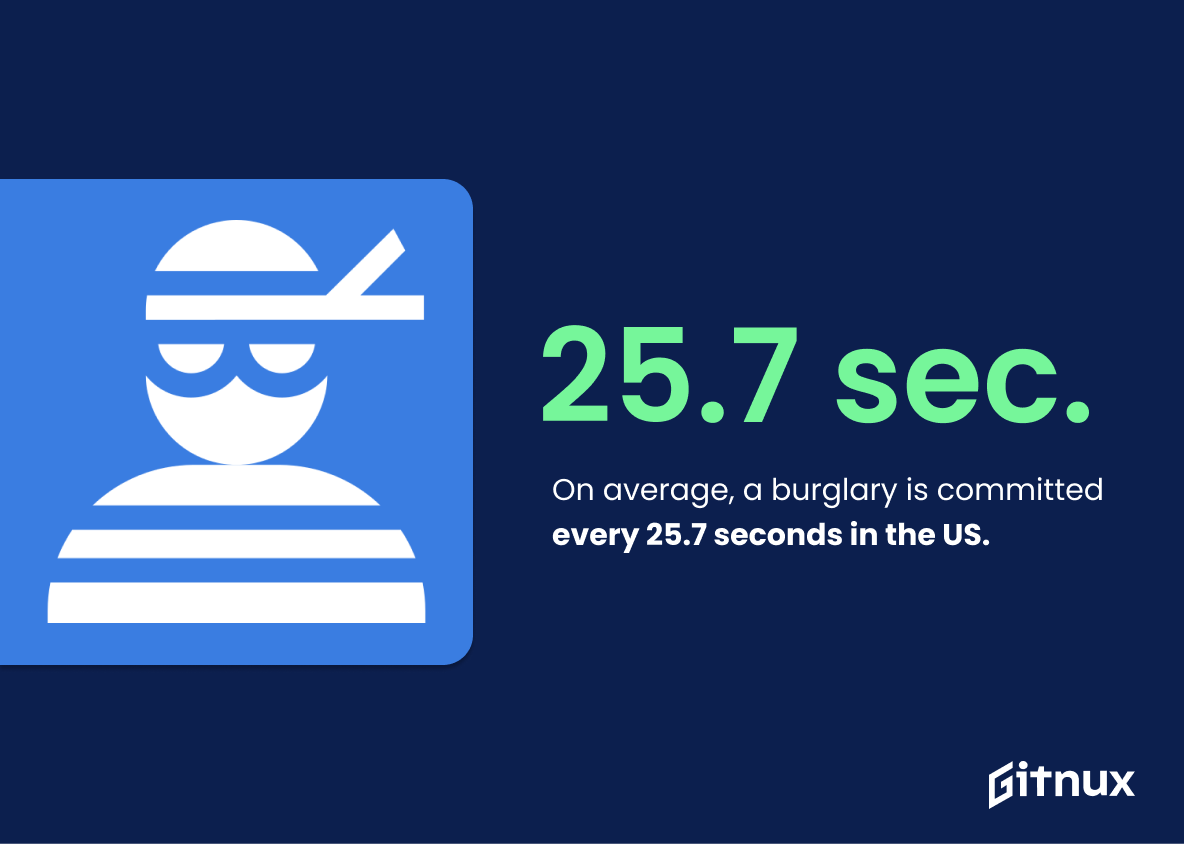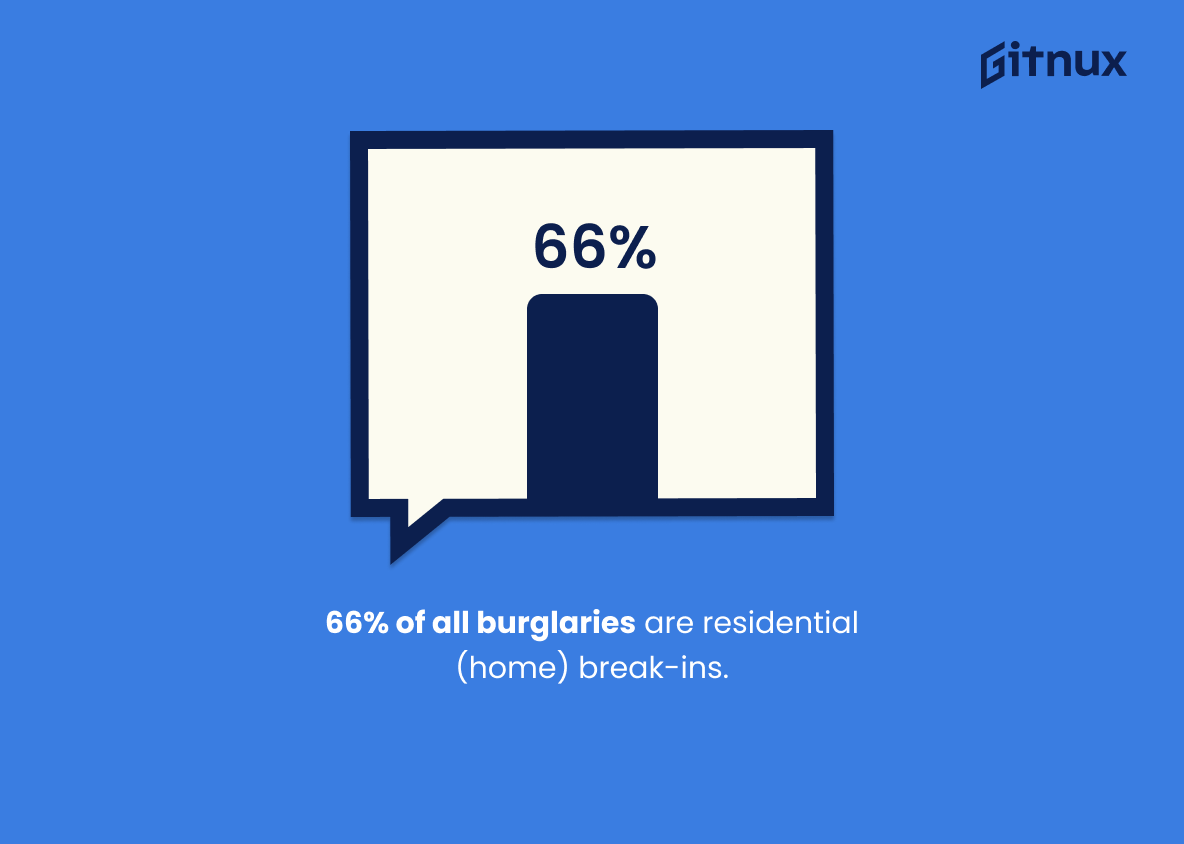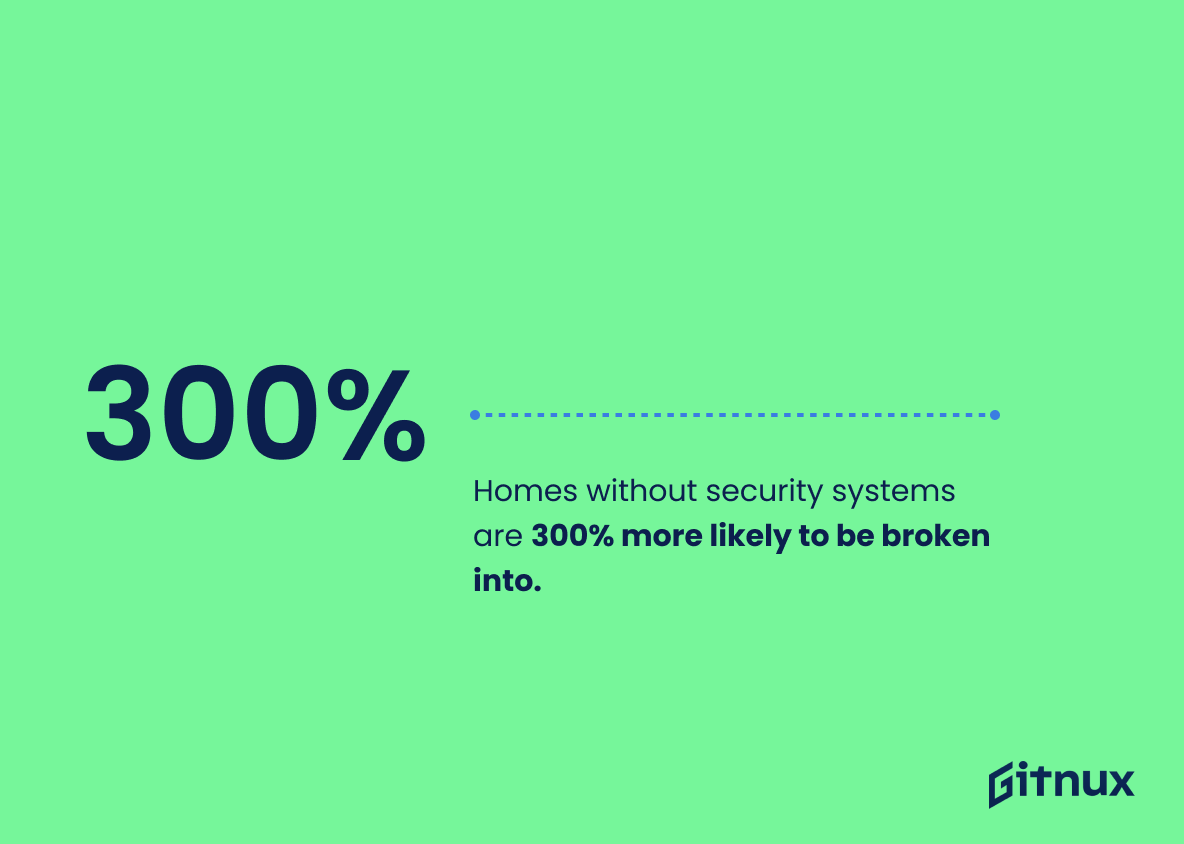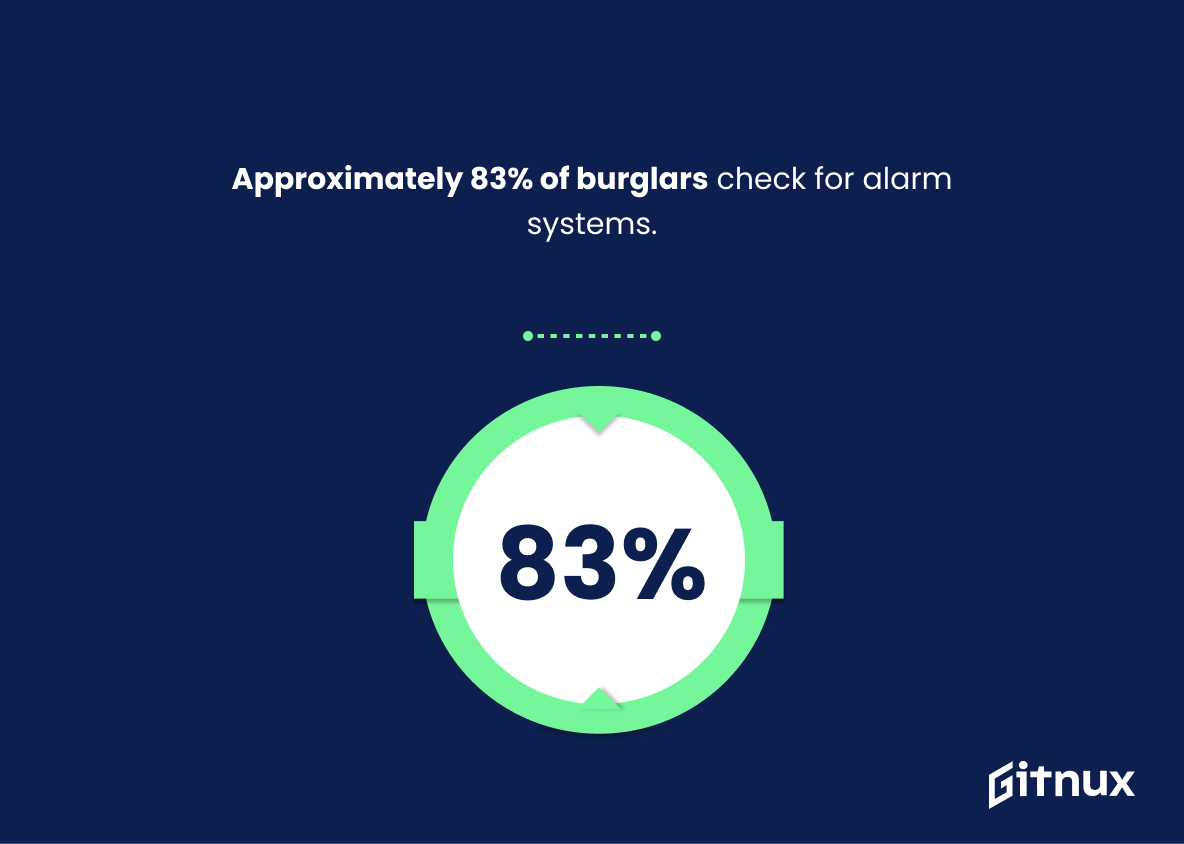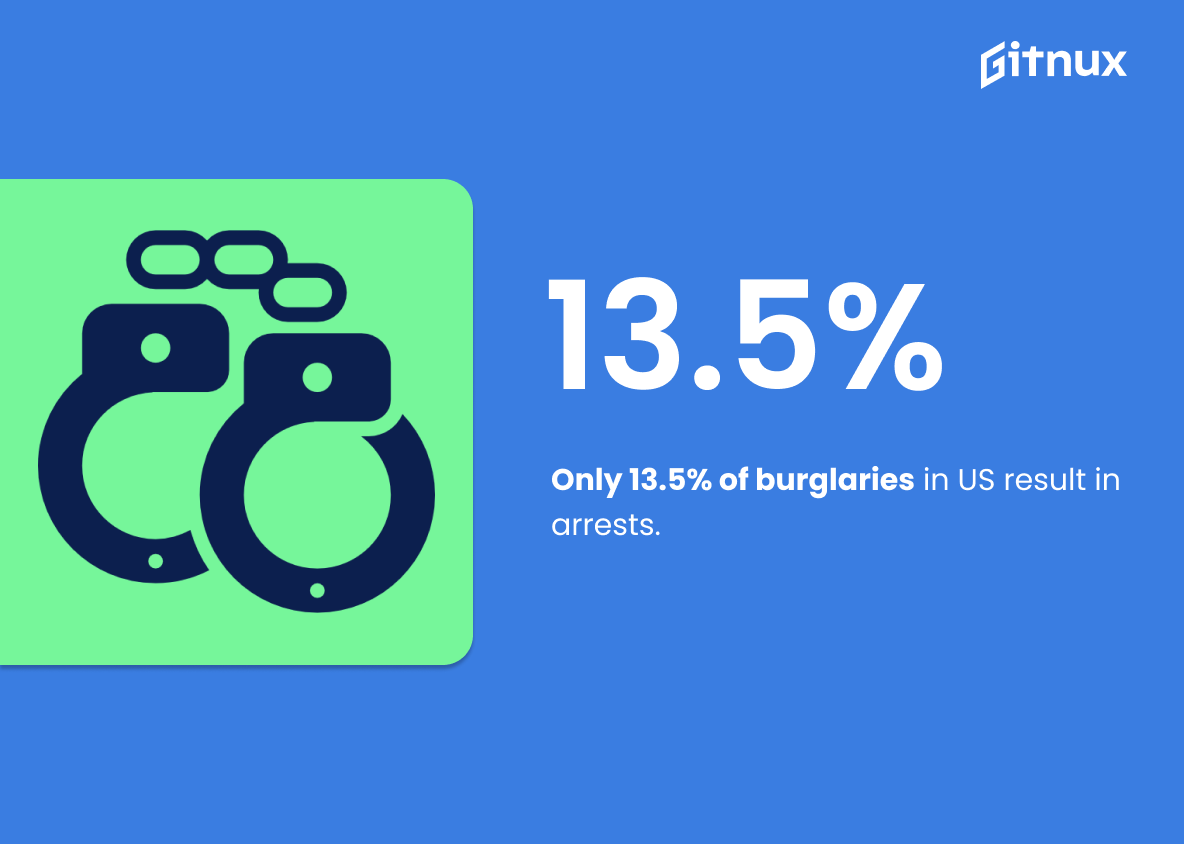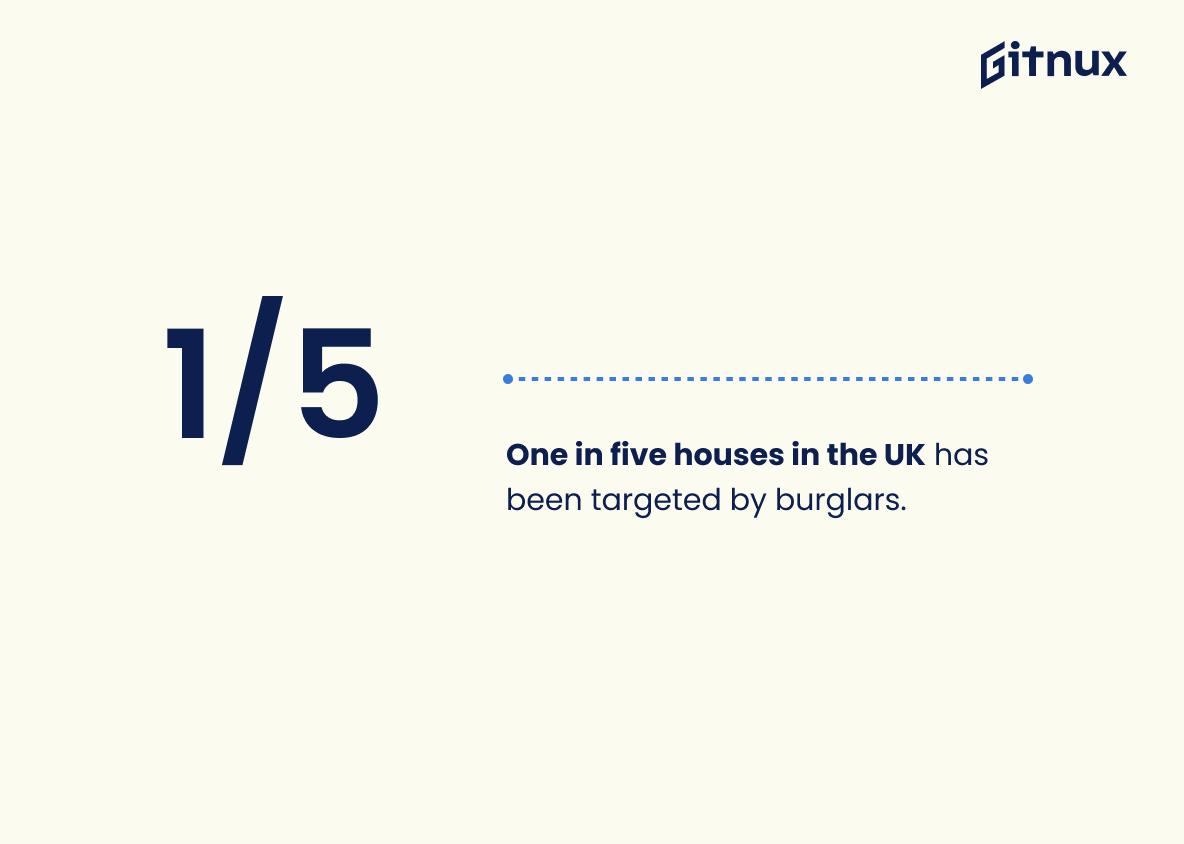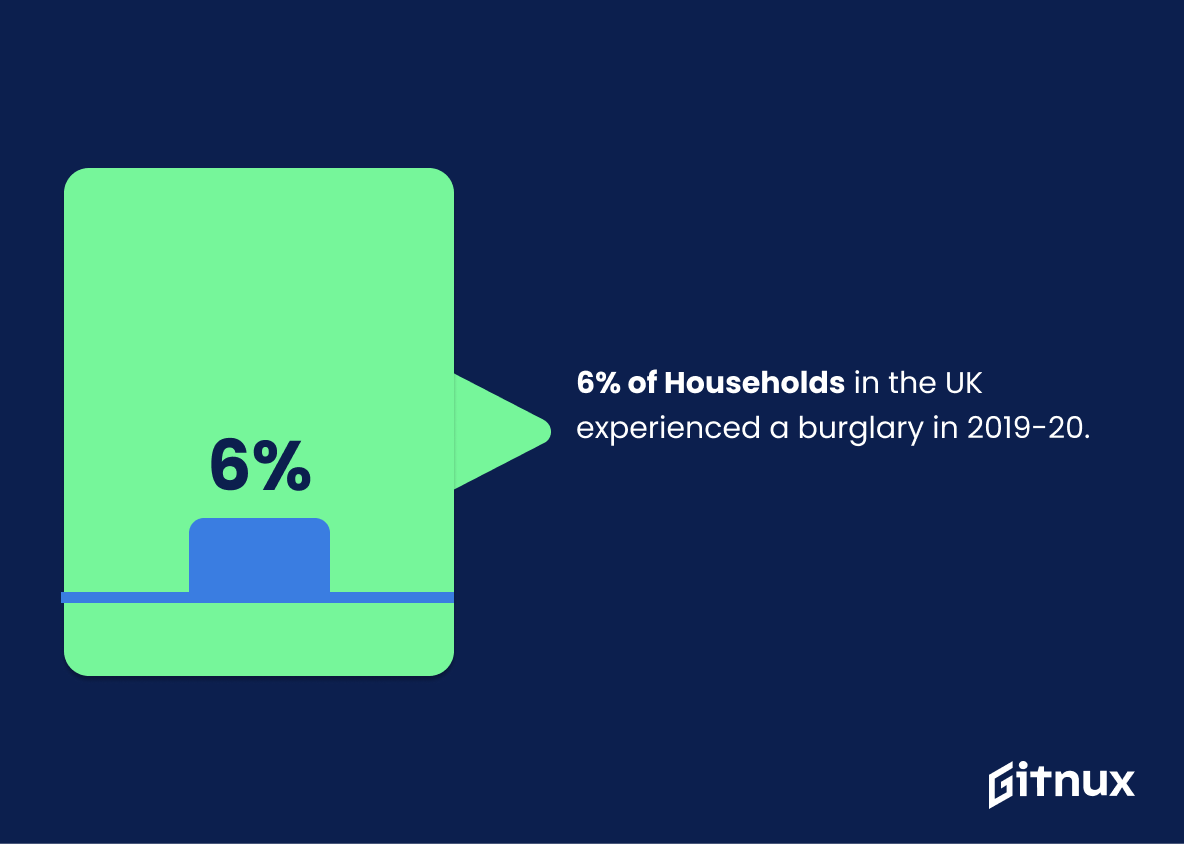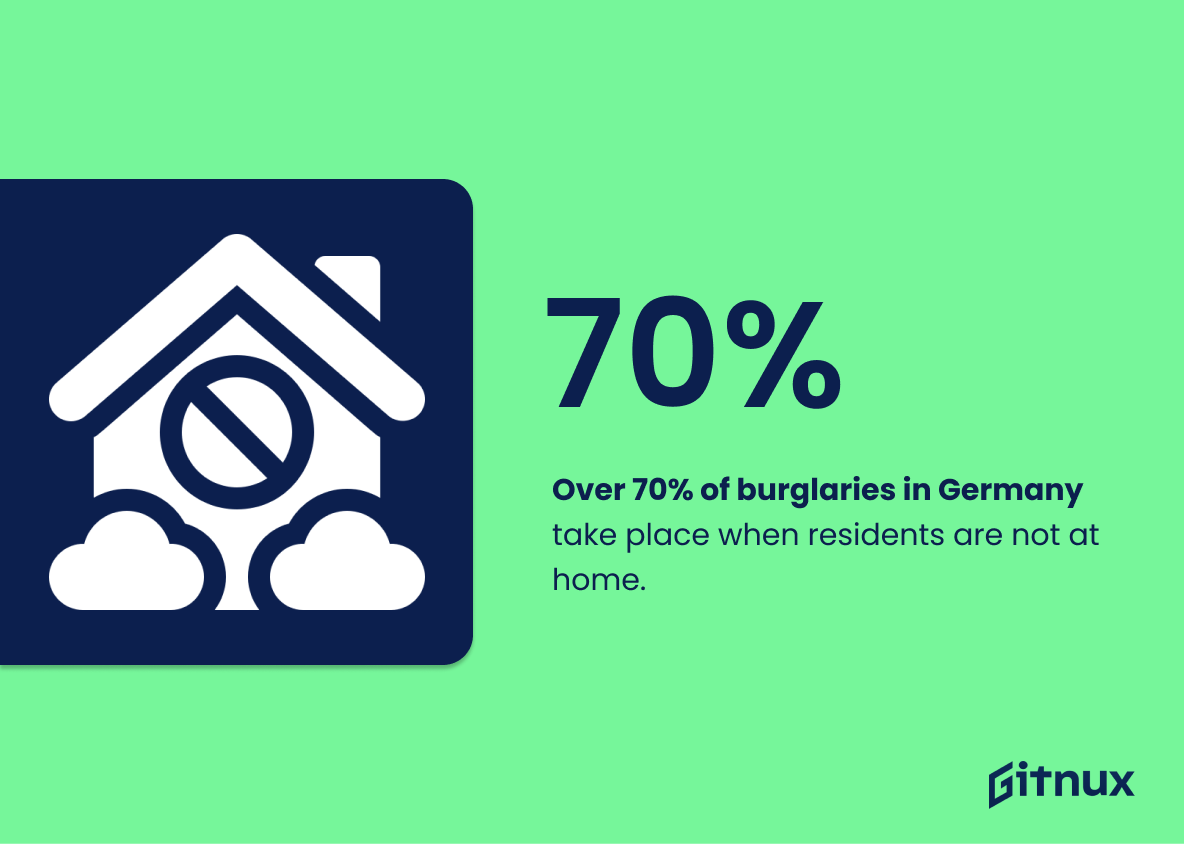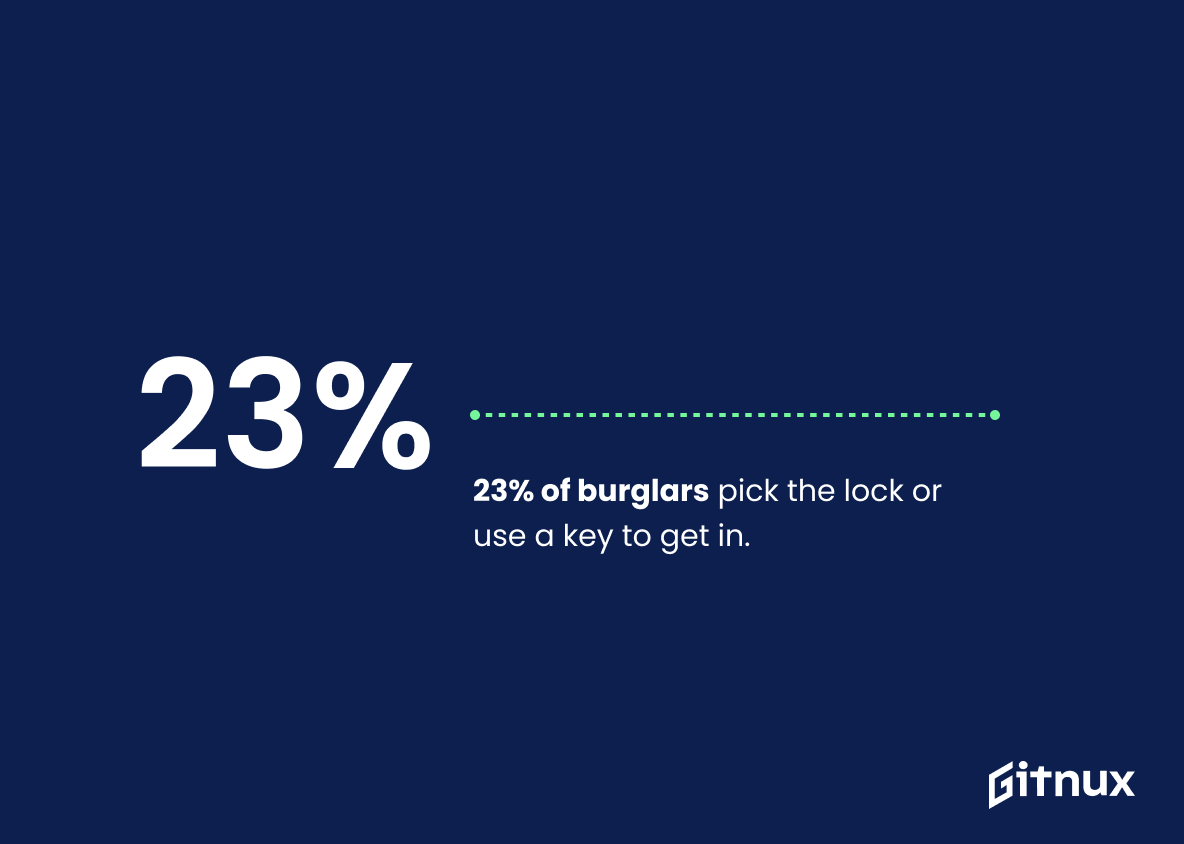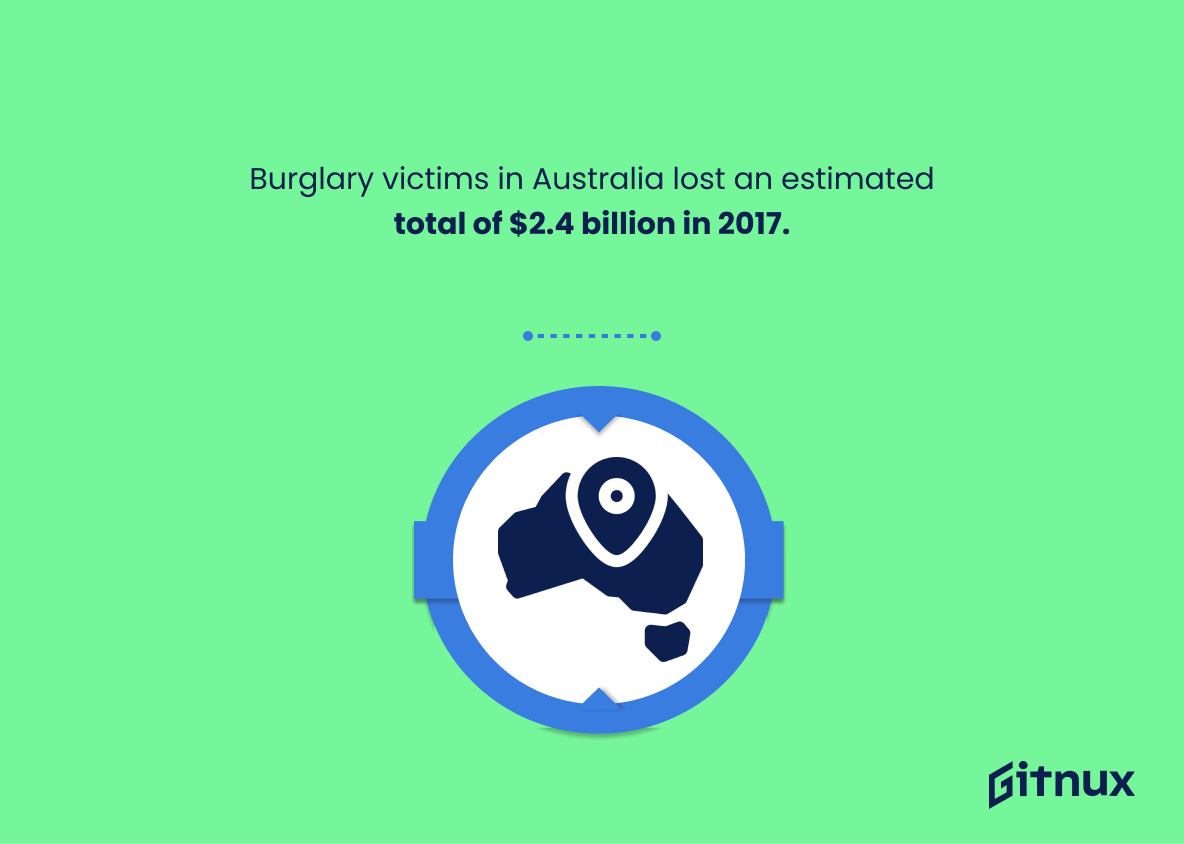Today’s society is rapidly evolving, with advancements in technology and shifts in societal dynamics. While these progressions bring us numerous conveniences and benefits, they also pave the way for new challenges. One such concern is the concerning frequency of house break-ins and burglaries. Unfortunately, they’ve become a common occurrence in many neighborhoods worldwide. This blog post aims to delve into the home invasion realities and offer an in-depth analysis of house break-in statistics. We’ll explore patterns, trends, and preventative measures to shed light on this crucial issue, enabling our readers to better protect their homes and loved ones. So, let’s take a closer look at the hard-hitting facts and figures revolving around residential break-ins.
The Latest House Break In Statistics Unveiled
On average, a burglary is committed every 25.7 seconds in the US.
Painting a vivid picture of the urgency and frequency of burglaries in the United States, the revelation that one such crime takes place every 25.7 seconds serves as a jarring wake-up call. This haunting ticking of the clock brings out the relentless nature of the issue, emphasizing the critical need for effective prevention measures in every U.S household. Essentially, this statistic weaves an undeniable urgency into the narrative of the blog post, reinforcing the overarching argument of the importance of home safety. It reinforces the fact that burglaries aren’t isolated incidents or rare occurrences – they’re surprisingly common crimes that could affect any household at any time if the necessary precautions aren’t taken.
66% of all burglaries are residential (home) break-ins.
Painting a vivid picture of the canvas that is home security, it’s crucial to spot the stark hue that residential burglaries cast. The number on the palette that catches your eye is 66%. A striking majority of all burglaries are staged in the supposed sanctuary of one’s dwelling. This figure underscores the urgency of fortifying domestic burglar-proof measures. It kicks complacency to the curb, acting as a beacon alerting homeowners to the prevalent threat lurking around their proverbial picket fences. Hence, this 66% figure doesn’t just dot the ‘i’s and cross the ‘t’s in our discussion of house break-in statistics, it sets the tone of the narrative, serving as a chilling reminder, and a call to action for all homeowners to revisit their security arrangements.
Homes without security systems are 300% more likely to be broken into.
Framing the substantial disparities in burglary risks surrounding home security systems, this captivating statistic becomes the linchpin of our discussion on House Break-In Statistics. A breathtaking 300% increase in break-in likelihood for homes sans security systems offers a stark testimony to the profound influence of preventive measures on criminal activity. It serves as bridging narrative in our statistical exploration, shedding a laser-sharp spotlight on the urgency of investing in fortified home defense mechanisms and in the longer run, fostering a safer neighborhood. It is this irresistible magnet pulling the readers towards deeper awareness, encouraging cognizant decisions to protect their homes from unwanted intrusion.
34% of burglars enter through the front door.
Highlighting that almost one in three burglars opt for the front door entrance serves as a shocking reminder for homeowners reading this blog post on house break-in statistics. It emphasizes the need for prioritized reinforcement of the primary entryway, shattering a common perception that illicit home entries solely occur through less conspicuous access points. Understandably, homeowners may fortify their back doors or install alarm systems on secluded windows thinking these are the vulnerable areas. Through data like this, however, we underscore that improving the security of the most commonly used entryway – the front door – could significantly deter a hefty 34% of would-be intruders.
Approximately 83% of burglars check for alarm systems.
Painting a vivid picture of the shadowy world of burglaries, this statistic serves as a pulsating alarm bell, alerting homeowners to the stark reality that a significant proportion of thieves are deterred by alarm systems. Not merely an abstract figure, 83%, it echoes through the narrative of the blog post, reinforcing the imminent need to invest in such security measures. Undoubtedly, it’s a telling revelation that emphasizes not just the value, but the sheer necessity of an alarm system in safeguarding one’s abode against unwelcome intrusions.
Only 13.5% of burglaries in US result in arrests.
Peeling back the layers of the data reveals an intriguing trend. Just a scant 13.5% of burglaries in the US culminate in arrests, a potentially chilling prospect for homeowners. This nugget of information serves as a key pointer to the monumental task that law enforcement faces in tracking down culprits across myriad break-in occurrences. It also shines a searchlight on the apparent impunity with which burglars operate, flagging an urgent need for strengthened home security measures and strategies. This statistic is the kind of data nugget that could shake homeowners from complacency, stirring them towards beefing up their security measures in order to fortify their homes against potential break-ins.
The month with the most break-ins is July.
Diving into the hot details of house break-in statistics, let’s shine some light on a fascinating finding. Picture the warmth of a summer day in July, an unexpected highlight of this month is its scandalous title as the king of break-ins. This striking piece of information should definitely make householders sit up and take notice.
Highlighting July as the month with the most break-ins is wielding a double-edged sword. On one edge, it brings a sense of urgency and awareness about the importance of heightening home security during this sunny but sinister month. On the flip side, it also provides invaluable insight for security companies to up their game, focus their efforts, and craft their marketing strategy around this surprising trend. This specific detail, therefore hidden within the bigger picture, unlocks the door for a more targeted approach to home safety.
One in five houses in the UK has been targeted by burglars.
Highlighting the striking revelation that “one in five houses in the UK has been targeted by burglars” paints an alarming yet riveting image of the pervasive burglary problem across the country. In the realm of a blog post about House Break In Statistics, it leverages gravity and urgency, encouraging readers to not just digest numbers passively, but also contemplate on the implications of such reality.
Furthermore, this statistic perceptibly anchors the broader dialogue on home security, personal safety, and the necessity for preventative measures to counteract this concern. It underscores the susceptibility of every household, given that, in every quintet of homes, there lurks one potential or actual victim of burglary.
Therefore, by integrating this statistic into our discussion, we do not just put things into perspective, but we transform numbers into insights, thereby making the conversation even more relatable, engaging and, above all, thought-provoking for our reader base. This statistic, in essence, magnifies the blog’s overall impact, imparting a renewed sense of awareness on home break-ins and the much-needed discourse on protection methods against them.
6% of Households in the UK experienced a burglary in 2019-20.
Painting a vivid insight into the prevailing conditions, the figure ‘6% of households in the UK experienced a burglary in 2019-20’ serves as a critical piece of the jigsaw puzzle for our blog post about house break in statistics. It epitomises the tangible evidence of the risks homeowners face in the UK, creating a resonating reminder that break-ins are not just remote possibilities, but a peril that potentially affects one in every 16 households. This percentage underscores the urgency of implementing efficient home security measures and illuminates a pressing area of concern that policy-makers, law-enforcement agencies, and every homeowner should direct their focus on to ensure the idea of ‘home’ remains one synonymous with safety and security.
The amount stolen during a burglary in the UK averages at £3,030.
Weaving this statistic into your blog post about House Break In Statistics, you’re painting a graphical picture for your readers that transcends mere numbers. This is £3,030 worth of hard-earned money, personal belongings and potentially irreplaceable sentimental objects lost to burglary, on average, per occurrence in the UK. It underlines the gravity and financial impact of these unlawful invasions, a powerful incentive to invest in better home security and vigilance. Beyond portraying the tangible losses, it indirectly signals the scale of emotional distress caused to victims, thus transforming how readers perceive and react to the persistent threat of burglaries at their homes.
Over 70% of burglaries in Germany take place when residents are not at home.
Highlighting the striking figure of over 70% of burglaries in Germany occurring when residents are not present, provides a significant underpinning to our blog discussion on House Break-In Statistics. It paints a vivid picture on the preferred modus operandi of burglars, elucidating their propensity to strike when the risk of human encounter is minimized. Strategically, this offers essential insight for readers on the importance of implementing security measures not just at night or during vacations, but consistently whenever their homes are vacated. Additionally, it fortifies the contention that efficient remote monitoring systems and alarm installations could be significant deterrents in the battle against burglary. Thus, such a statistic infuses the blog narrative with a critical perspective, helping readers understand trends behind break-ins and better situate their individual home safety strategies.
Houses on a cul-de-sac are more likely to be burgled than other houses.
Peering through the lens of a statistician, the intriguing relationship between a house’s location on a cul-de-sac and its susceptibility to burglary enlightens anyone with a renewed perspective on home safety. In a blog post discussing House Break-In Statistics, this striking statistic serves as a bellwether, alerting potential homeowners of the unexpected risks of seclusion. It might inspire readers to adopt advanced safety measures, redesign the layout of their new abodes, or even reconsider the location of their next property purchase. In essence, by shedding light on the shadowed implications of a seemingly desirable housing feature, this statistic underscores the intricate interplay between location and safety, ultimately contributing to our understanding of the complex landscape of house break-ins.
23% of burglars pick the lock or use a key to get in.
In the realm of House Break In Statistics, the striking revelation that nearly one quarter of burglars opt for a less forceful, yet effective entry strategy—be it lock picking or key usage—undoubtedly serves as a call to arms for improved home security measures. This surprising figure underlines the importance of investing in high-quality, tamper-proof locks, and a responsible key management approach. Doubling down on these two simple yet strategic facets significantly shrinks the opportunity window for these stealthy burglars and leaves them groping for other entry points—which, rest assured, are usually less favorable. So, if home-owners wish to eliminate 23% of their burglary risk right off the bat, this key piece of information could well be the perfect starting point.
Approximately 28% of burglaries occur when someone is at home.
Painting a vivid picture of home burglary statistics, one can’t overlook an astounding fact: in nearly three out of every ten break-ins, the intruder bold-facedly infiltrates an occupied home. The potency of this statement lies not just in its shock value, but also in the essential perspective it offers. Not all burglaries occur under the cloak of darkness or when homes are left empty. This unsettling reality drives home the gravity of the situation, underscoring the importance of robust home security practices day in and day out, irrespective of occupancy. Such information allows readers to understand the potential risk they face personally, inviting them to rethink their home safety strategies and enhance their defensive measures.
Burglary victims in Australia lost an estimated total of $2.4 billion in 2017.
Peering into the staggering loss of $2.4 billion endured by burglary victims in Australia in 2017, we uncover a profound and palpable testament to the gravity and frequency of house break-ins. This staggering figure not only serves as a stark reminder of the tangible economic impact of burglary in society but also underscores the essential need for intensified security measures and awareness. Carved on the canvas of House Break-In statistics, the $2.4 billion loss paints a vivid picture of the unfortunate financial blow countless Australian citizens faced due to burglaries, elevating the importance of this discussion within our blog post.
In South Africa, an average of 603.7 homes are burgled every day.
Shinning a spotlight on “In South Africa, an average of 603.7 homes are burgled every day,” it’s as if each day a small city goes to sleep peaceful and wakes up violated and invaded. This figure stands as a stark revelation of the frequency and severity of house burglaries. In the vast canvas of house break-in statistics, it splashes a profound impact, making evident the importance of robust security measures. It nudges readers to gauge the gravity of the situation and could instigate them to take a more proactive approach to their home safety. From investigating alarm systems to reinforcing doors and windows, this data unveils a harsh reality and prompts measures to prevent becoming a part of such a grim statistic.
Conclusion
Understanding house break-in statistics is essential not only for crime analysts but also for everyone. Awareness enables us to realize the prevalence of burglaries and prompts us to take precautionary measures, adequately secure our homes, and exert efforts in community vigilance. It’s crucial to remember that empirical data such as this should not breed fear but rather, foster responsible action towards enhanced home security. Let’s utilize these statistics to be informed, prepared, and proactive in safeguarding our homes against burglaries.
References
0. – https://www.www.creditdonkey.com
1. – https://www.www.ons.gov.uk
2. – https://www.www.asecurelife.com
3. – https://www.www.locksmiths.co.uk
4. – https://www.www.safewise.com
5. – https://www.www.iamexpat.de
6. – https://www.businesstech.co.za
7. – https://www.www.policyexpert.co.uk
8. – https://www.www.aic.gov.au
